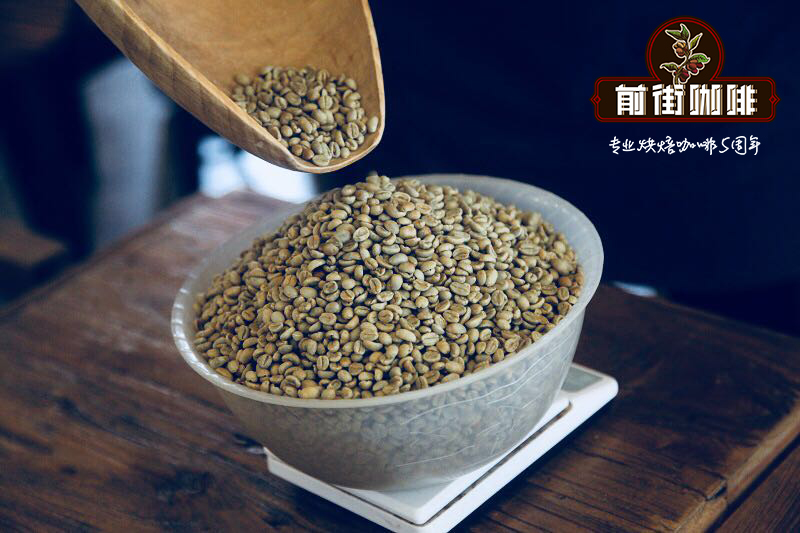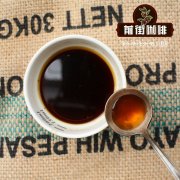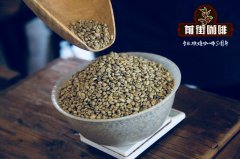The hometown of Yemeni Mocha Coffee-- Yemeni Mocha Coffee History
The hometown of Yemeni Mocha Coffee-- Yemeni Mocha Coffee History

When it comes to Yemeni coffee, "mocha" must be mentioned. Everyone has heard of "mocha coffee". What exactly is "mocha"?
There are many answers to this question. Some people say that mocha is a certain place of origin, and some people remember that mocha is sweet chocolate coffee. In fact, authentic mocha coffee is only produced in the Republic of Yemen in the southwest of the Arabian Peninsula and grows on steep hillsides with elevations of 3,000 to 8,000 feet. It is also the oldest coffee in the world.
More than 500 years ago, Yemen produced coffee in an ancient way. In the early 17th century, the first batch of Yemeni coffee sold to Europe was exported through the ancient port of Mocha, which surprised Europeans. The delicious coffee shipped from the port of Mocha was called "mocha coffee", which is the origin of the name "mocha coffee".
Neighboring Ethiopia across the Red Sea also sells coffee through the port of Mocha, so Ethiopian sun-treated coffee is often called mocha. (such as Mocha-Hara Ethiopia Harrar) now the old port of Mocha has long been abandoned due to sediment deposition (today's place name Al Makha) and is exported by the northwestern port of Hudaida (Hodeida). However, people have long been accustomed to the name of Mocha, which is famous to the sky.
Deep-roasted Yemeni coffee often shows a chocolate-like caramel sweet flavor, so when you see the word "mocha coffee", it may refer to pure Yemeni coffee, or neighboring Ethiopian coffee, or simply. In any case, for picky coffee gluttons, only real Yemeni coffee is qualified to be called "mocha coffee."
The word "mocha" has a variety of spellings: Moka, Moca and Mocca are all common spellings, and as many as four local spellings have been seen on gunny bags and documents of Yemeni coffee: "Mokha", "Makha", "Morkha" and "Mukha", all with the same meaning.
The Yemeni mocha is the originator of the world coffee trade and has played an important role in promoting delicious coffee all over the world. In the 17th century, it was called "Arabica coffee" (Arabia) (this is the origin of the name "Arabica" later! Yemeni mocha sailed across the ocean to Italy and other European Catholic countries, and for more than 150 years, Yemeni coffee has been the only coffee producer sold to Europe.
In ancient times, in conservative Catholic countries, extraordinarily good things were often considered evil, and coffee was once burdened with inexplicable evil. It was not until the Vatican Pope, who also loved coffee, declared that coffee was a Catholic drink and blessed coffee drinkers that coffee began to spread widely in Europe. Although Ethiopia was the first country in the world to discover coffee, it was Yemen that carried it forward.
The only surviving ancient fish in the coffee world.
Today, Yemeni coffee farmers still produce coffee in the same way as they did 500 years ago.
Coffee berries grow naturally on trees, do not use any artificial fertilizers or pesticides, receive a small amount of rain and fog on the hillside in summer, blossom and bear fruit, and in dry winter, ripe coffee berries are allowed to hang on the trees to dry naturally-a very unique and rare practice, because the extremely dry climate and intense sun in Arabia allow this to be done in other coffee producing areas. The same practice may cause coffee berries to rot on the trees.
Ripe or dried coffee berries fall naturally from the tree, or are shaken and picked. Coffee farmers, with a total population of nearly 1/4 in Yemen, bask their berries on their roofs, low sheds in front of their doors, or even spread them directly on the dirt floor to be exposed to the fierce and dry winter sun. After drying the peel and pulp, grind off the dried hard shell and pulp with an old-fashioned stone mill (two stone mills stacked on top of each other). This is how the coffee beans are treated!
A small number of coffee farmers in Yemen still use animals (such as camels and donkeys) as a source of stone grinding power. Compared with the Central and South American countries that use advanced machinery and equipment to deal with coffee beans in large quantities, and even neighboring Kenya, which has a short history of coffee, the Yemeni mocha is the only living gourmet in the coffee world! Do you know? The Yemeni coffee you drink today is basically not much different from the "Arabian coffee" enjoyed by aristocratic European businessmen hundreds of years ago in the oldest coffee shop in Europe in the square of St. Mark's in Venice, Italy.
In contrast to the washing method used in most coffee producing areas in the world, Yemeni coffee is completely sun-treated, and the process of stone grinding (crushing with two stone mills) makes chopped beans mixed, resulting in an irregular appearance. Raw beans are often mixed with twigs, small stones and even sun-dried insects (which are screened out during baking). It also has the most unique, rich and fascinating complex smell in the world: "Red wine, wild game, dried fruit, blueberry, grape, cinnamon, tobacco, sweet spices, log and even chocolate." you can see all kinds of adjectives used to describe Yemeni mocha!
Because of the sun-dried pulp, the flavor of the coffee berries has a chance to "seep" into the coffee beans, and when the coffee fruit falls on the dry soil of the African plateau, it will also absorb the smell of the surrounding organic matter. In addition, the intense winter sun in Arabian Peninsula gives "the smell of the sun" (you can smell a similar smell on sun-basked quilts), the fermented flavor of ripe fruit naturally fermented from the flesh, and a hint of soil. There are 300,000 coffee plantations ranging from 3000 to 8000 feet above sea level, as well as ancient, 100% organic treatments that make the Yemeni mocha unique in the world.
In the common Yemeni mokas, Mokha Mattari is the most famous. Madali, produced in Bani Matar (also known as Bany Mattar) province, is a coffee produced at high altitude. it usually has a good aroma of red wine, dry fruit, thick taste, deep roasting and often shows the sweetness of chocolate caramel.
Due to the sharp decline in production due to political instability in Yemen in recent years, Mokamadali, the most famous coffee industry, has become a target for water adulteration, and has been mixed with lower-grade shoddy beans from time to time. Nowadays, even if it is marked as Madali, it is not a guarantee of high quality. Good quality Madali beans are small, raw beans have sweet wine aroma and moderate ripe fruit fermentation flavor, excellent Madali performance will never let coffee gluttons down!
Mokha San'ani is a mixed bean of tens of thousands of small farms on the hillside near the capital San'a (Picture 2). Planted at a slightly lower altitude than Madali, generally speaking, it tastes thinner and less acidic, but it has a good fruit flavor and often has better ripe fruit and wild game than Madali. According to experience, the quality of Sanani varies greatly, and sometimes there are inferior products with flat flavor, fishy smell and excessive fermented flavor. Careful cup testing and selection is a must for coffee importers to do their homework and absolutely not to be lazy.
Mocha Yishi Mary (Mokha Ismaili) is one of the traditional ancient tree species, planted at a high altitude, more than 6500 feet, characterized by more round beans, smaller beans than Madali, thick taste, high complexity, in general, often surpass the performance of Madali. This is the least produced and most expensive Yemeni mocha (Yemeni mocha is no longer cheap). The high-quality Mokayishi Mary is produced in Hirazi (although it is famous as Bani Matar, it is the best-known local production area in Yemen). The highest elevation in Hirazi is as high as 8000 feet.
Mokha Rimi is produced in the Djebel Remi (also known as Raimi, Rayma) area, and its quality is similar to that of Shanani. In my experience, mocha Remi is usually slightly fermented, occasionally showing surprisingly strong sweet smell of raisins. When roasted properly, coffee beans smell like opening a full-bodied bottle of jam.
Mokha Yafeh is produced in the southern Yemeni province of Yafeh (also known as Yaffe). It belongs to the uncommon Yemeni mocha. It is the only "southern flavor" in Yemen, and its output is small. Almost all of them are sold to the neighboring United Arab Duchy, and they are rarely seen in the boutique coffee market.
A coffee expert once said, "the taste of Yemeni mocha is so diverse that it varies not only from different places, different tree species, and different batches, but also from each sack or even every cup." "because of his complexity and variety, it is a challenge for coffee roasters to bake the best flavor of Yemeni mocha! Medium and shallow roasting shows sweet fruit, mild, warm sun-fermented taste, while deep baking shows a strong aroma of red wine and a bitter chocolate aftertaste, which makes people taste again and again, "the aftertaste lingers for three days." It's no wonder that there are so many coffee gluttons who love this way and regard Yemeni mochas as their favorites.
A confusing name
There are no general guidelines for the naming of Yemeni coffee, and there is no official grading system. Local residents have their own classification system, with hundreds of coffee codes and names for internal classification purposes, but they are not suitable for commercial market (export) coffee. In the commercial market, the Yemeni mocha is usually named in one of two ways: "place name", or "tree species name".
The Yemeni Mokamadali Mokha Mattari and the Yemeni Shannani Mokha San'ani adopt the "origin nomenclature", which means they are produced in Bani Matar province and in the hillside near the capital San'a, respectively. The Yemeni Mokayishi Mary Mokha Ismaili adopts the "tree species nomenclature", which is produced in Hirazi, southwest of Bani Matar.
Important Notice :
前街咖啡 FrontStreet Coffee has moved to new addredd:
FrontStreet Coffee Address: 315,Donghua East Road,GuangZhou
Tel:020 38364473
- Prev

What are the ways to treat raw coffee beans? What are the advantages and disadvantages of coffee beans treated with sun water and honey?
What are the ways to treat raw coffee beans? What are the advantages and disadvantages? All kinds of raw bean treatment methods, we must first know the structure of coffee fruit, cherry-like coffee fruit, from the outside to the inside are peel, pulp, pectin layer, sheep skin (seed shell), silver skin, seed. The thickness of pectin layer is about 1-2mm, which can be thought of as tomato.
- Next

The hometown of Yemeni Mocha Coffee-- Yemeni Mocha Coffee History
The hometown of Yemeni mocha coffee-Yemeni mocha coffee history when it comes to Yemeni coffee, it is necessary to mention "mocha". Everyone has heard of "mocha coffee". What exactly is "mocha"? There are many answers to this question. Some people say that mocha is a certain place of origin, and some people remember that mocha is sweet chocolate coffee. In fact, authentic mocha coffee is only produced in
Related
- Detailed explanation of Jadeite planting Land in Panamanian Jadeite Manor introduction to the grading system of Jadeite competitive bidding, Red bid, Green bid and Rose Summer
- Story of Coffee planting in Brenka region of Costa Rica Stonehenge Manor anaerobic heavy honey treatment of flavor mouth
- What's on the barrel of Blue Mountain Coffee beans?
- Can American coffee also pull flowers? How to use hot American style to pull out a good-looking pattern?
- Can you make a cold extract with coffee beans? What is the right proportion for cold-extracted coffee formula?
- Indonesian PWN Gold Mandrine Coffee Origin Features Flavor How to Chong? Mandolin coffee is American.
- A brief introduction to the flavor characteristics of Brazilian yellow bourbon coffee beans
- What is the effect of different water quality on the flavor of cold-extracted coffee? What kind of water is best for brewing coffee?
- Why do you think of Rose Summer whenever you mention Panamanian coffee?
- Introduction to the characteristics of authentic blue mountain coffee bean producing areas? What is the CIB Coffee Authority in Jamaica?

